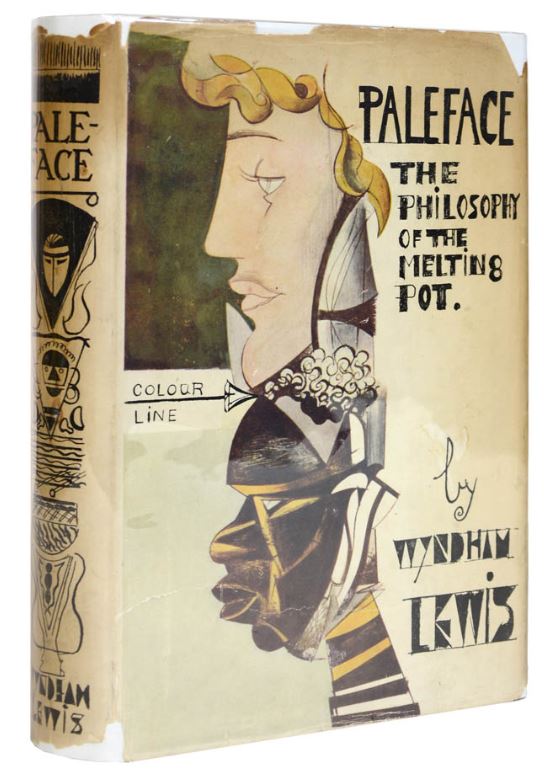Laws of Media has more discussion of mimesis than any other McLuhan text. But its appearances in LoM are far from uniform. The demand made as much on a reader today as on the McLuhans, when they discussed these points together in the 1970s, is to interrogate its Protean nature.
The question of subjective, objective and dual genitives is, as always, a key to interrogation. McLuhan employs the following genitive phrases regarding mimesis : the nature of mimesis, versions of mimesis, the spell of mimesis, the oral habit of mimesis, mimesis of the alphabet, the mimesis of human action. It must always be wondered what sort of genitive seems to have been intended, what other sort of sorts might have been intended, and what sort or sorts should have been intended.
Here in page order are the discussions of mimesis in LoM. A later post, or posts, will supply commentary.
Laws of Media, 4
There has been great confusion for many centuries over certain matters crucial to an understanding of acoustic space, for example, the natures of logos, of mimesis, and of formal causality. This confusion flows directly from the fact that all commentary and research, from Aristotle onwards, was conducted by persons, to one or another degree visually biased, who assumed visual space to be the common-sense norm. As a result, there are at least two forms or rather versions of mimesis and of logos and of formal cause. One of each has an oral structure, and the other a visual — with the former conventionally regarded as a confused or tentative attempt to explain the latter.
Laws of Media, 16-17
The split between conscious and unconscious, as an effect of the alphabet, is of crucial significance. It is a mimesis of the dissociation of perceptual sensibilities (of vision from the other senses), which is inherent in the form of the phonetic alphabet.
For the preliterate, mimesis is not merely a mode of representation but ‘the process whereby all men learn’; it was a technique cultivated by the oral poets and rhetors and used by everybody for ‘knowing’ via merging knower and known. This understanding survives in the maxim ‘the cognitive agent is and becomes the thing known’. Using mimesis, the ‘thing known’ ceases to be an object of attention and becomes instead a ground for the knower to put on. It violates all the properties of the visual order, allowing neither objectivity, nor detachment, nor any rational uniformity of experience, which is why Plato was at pains in the Republic to denounce its chief practitioners. Under the spell of mimesis the knower (hearer of a recitation) loses all relation to [the] merely present persona [of] person and place and is transformed by and into what he perceives. It is not simply a matter of representation but rather one of putting on a completely new mode of being, whereby all possibility of objectivity and detachment of figure from ground is discarded. Eric Havelock devotes a considerable portion of Preface to Plato to this problem. As he discovered, mimesis was the oral bond by which the tribe cohered:
“You threw yourself into the situation of Achilles, you identified with his grief or his anger. You yourself became Achilles and so did the reciter to whom you listened. Thirty years later you could automatically quote what Achilles had said or what the poet had said and about him. Such enormous powers of poetic memorisation could be purchased only at the cost of total loss of objectivity. Plato’s target was indeed an educational procedure a whole way of life.” (Preface to Plato, 45)
Paradoxically, when the Greeks approached alphabetic technology using their oral habit of mimesis, they put on its visual stress instead.
The new visual ground completely alienated [the Greeks] from tribal culture; and so there came to be an intense rivalry between the two modes of culture. In the Republic Plato vigorously attacked the control exercised through mimesis by the oral establishment, for it “constituted the chief obstacle to scientific rationalism, to the use of analysis, to the classification of experience, to its rearrangement in sequence of cause and effect. That is why the poetic state of mind is for Plato the arch-enemy and it is easy to see why he considered this enemy so formidable. He is entering the lists against centuries of habituation in rhythmic memorised experience. He asks of men that instead they should examine this experience and rearrange it, that they should think about what they say, instead of just saying it. And they should separate themselves from it instead of identifying with it; they themselves should become the ‘subject’ who stands apart from the ‘object’ and reconsiders it and analyses it and evaluates it, instead of just ‘imitating’ it.” (Preface to Plato, 47) Through mimesis of the alphabet, the Greeks absorbed visual dissociation of sensibilities…
Laws of Media, 17
Prolonged mimesis of the alphabet and its fragmenting properties produced a new dominant mode of perception and then of culture.
Laws of Media, 19
Previously, with [oral, pre-alphabetic] mimesis, ‘being’ had been immersed in the metamorphic and Protean flux of everyone’s daily experience. With the new ground of alphabetic awareness, objectivity and detachment became the rule. Mimesis was turned from a making process into representational matching, and the old experience of being was retrieved on the new terms of visual space, that is, as an abstract absolute.
Laws of Media, 33
There is much confusion among early commentators and later scholars about the various forms of space as well as other matters such as the nature of mimesis and of the logos. Aristotle and others were working with one foot in each world, as it were, using the new forms of awareness but trying to retain or update the ideas of the old oral culture.1
Laws of Media, 35
The mode of cognition in acoustic [and in]2 multisensory spaces is mimesis. ‘The cognitive agent is and becomes the thing known’ while the eye is in equal interplay with the other senses.
Laws of Media, 48
The French symbolist poets responded immediately and intuitively to the ground introduced by the telegraph by retrieving pre-alphabetic forms of discontinuous resonance and mimesis. Baudelaire announced the rediscovery of audience as mimetic ground for [his]3 work: his reader puts on and wears the art as a means of correcting not his concepts but rather his perception. The reader is a mask-wearer (‘Hypocrite’), the poem the mask: ‘Hypocrite lecteur, – mon semblable, – mon frère!’
Laws of Media, 64
The acoustic power available to the poetic establishment that Plato warred against was puny by comparison to the sensory stress exerted by any one of our technologies and its grounds. Plato realized that civilization did not have a chance until the mimetic spell of the bards was broken.
Laws of Media, 80
It took many centuries for the alphabet to suppress the right hemisphere and the mimetic tribal bonds of the Greeks and to release the focused energy of the visual left hemisphere, for the technology had to filter up from the working and merchant classes to the aristocracy.
Laws of Media 83
The caricature of inner or right-hemisphere awareness experienced by the drug culture (…) provides an artificial mimesis of the electric information environment
Laws of Media, 123
Ricoeur [in The Rule of Metaphor] leans on Aristotle’s distinction of metaphor as part of rhetoric on the one hand, and as part of dramatic mimesis on the other. His essential point is contained in Aristotle’s statement, “to metaphorize well implies an intuitive perception of the similarity in dissimilars” [Poetics, 1459a3-8].
Laws of Media, 123-124
The effect of phonetic literacy on the Greek psyche and culture was catastrophic. Mimesis gave way to individualized detachment, and the integral resonating oral logos was broken into multiple fragments, each bearing some one or another of its original properties.
Laws of Media, 205 (Visual Space Tetrad)
resonant, multilocational, multisensory, transformational <=> mimesis, the animate universe
Laws of Media, 229-230
It is Aristotle, notes Paul Ricoeur, “who actually defined metaphor for the entire subsequent history of Western thought, on the basis of a semantics that takes the word or the name as its basic unit. Furthermore, his analysis is situated at the crossroads of two disciplines — rhetoric and poetics — with [two] distinct goals, ‘persuasion’ in oral discourse and the mimesis of human action in tragic poetry” (The Rule of Metaphor, 3). It is no accident that Aristotle chose to dissect the point of maximal interface of rhetoric and grammar, [namely] dramatic poetry. The heart of the discussion is found (…) in the Poetics (1457b, 6-9): “Metaphor consists in giving the thing a name that belongs to something else, the transference being either from genus to species or from species to genus, or from species to species, or on grounds of analogy.”
Laws of Media, 235 (Metaphor Tetrad)
transformation/transfiguration <=> fresh awareness via mental mimesis
- In a footnote to LoM 35: “The obscurity of this commentary is largely a result of the problem posed Aristotle by his own visual bias when trying to report on audile-tactile awareness.” See McLuhan and Plato 13: epyllion for some discussion. ↩
- The McLuhans have ‘or’ here, which is ambiguous between identifying or differentiating ‘acoustic’ and ‘multisensory space’. The suggested amendment takes the differentiating option. ↩
- McLuhan: ‘a’. ↩

